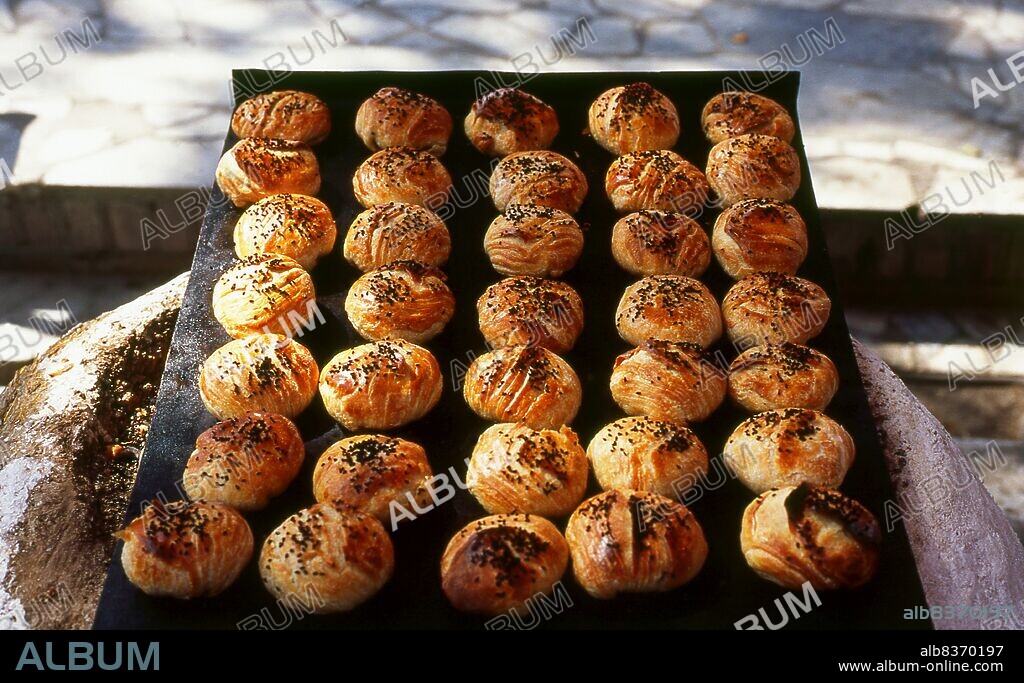alb8370197
Uzbekistan: Samsa< / i> (Samosas; baked flaky pastry filled with meat and onions) on a hot tray at a stall in the main market, Samarkand (2000)

|
Zu einem anderen Lightbox hinzufügen |
|
Zu einem anderen Lightbox hinzufügen |



Haben Sie bereits ein Konto? Anmelden
Sie haben kein Konto? Registrieren
Dieses Bild kaufen

Titel:
Uzbekistan: Samsa< / i> (Samosas; baked flaky pastry filled with meat and onions) on a hot tray at a stall in the main market, Samarkand (2000)
Untertitel:
Siehe automatische Übersetzung
Samarkand (Uzbek: Samarqand, from Sogdian: 'Stone Fort' or 'Rock Town') is the second-largest city in Uzbekistan and the capital of Samarqand Province. The city is most noted for its central position on the Silk Road between China and the West, and for being an Islamic centre for scholarly study.
. In the 14th century it became the capital of the empire of Timur (Tamerlane) and is the site of his mausoleum (the Gur-e Amir). The Bibi-Khanym Mosque remains one of the city's most notable landmarks. The Registan was the ancient center of the city.
. In the 14th century it became the capital of the empire of Timur (Tamerlane) and is the site of his mausoleum (the Gur-e Amir). The Bibi-Khanym Mosque remains one of the city's most notable landmarks. The Registan was the ancient center of the city.
Bildnachweis:
Album / Universal Images Group / David Henley / Pictures From History
Freigaben (Releases):
Model: Nein - Eigentum: Nein
Rechtefragen?
Rechtefragen?
Bildgröße:
4923 x 3029 px | 42.7 MB
Druckgröße:
41.7 x 25.6 cm | 16.4 x 10.1 in (300 dpi)
Schlüsselwörter:
ASIEN • ASIEN, KONTINENT • BASAR • DAVID • ESSEN • GEWERBE • KAUFHALLE • KONTINENT, ASIEN • LEBENSMITTEL • MAERKTE • MAHLZEIT • MARKT • NAHRUNGSMITTEL • SPEISE • SPEISEN • UNESCO • VERPFLEGUNG
 Pinterest
Pinterest Twitter
Twitter Facebook
Facebook Link kopieren
Link kopieren Email
Email
